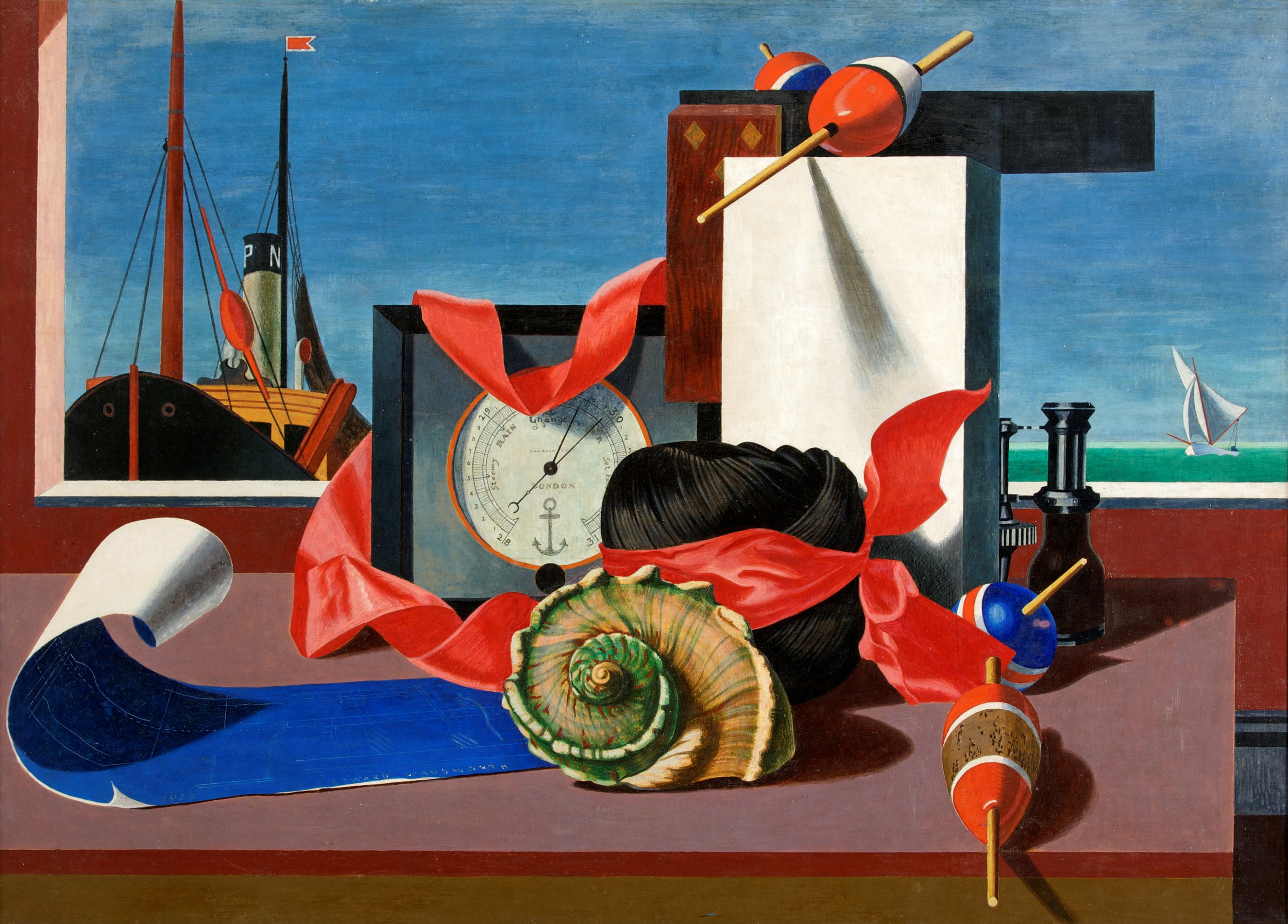Deconstructing the mugs | The Shape of Things: Still Life in Britain at Pallant House
Edward Wadsworth, Bright Intervals, 1928, Tempera on canvas laid on panel. Museum & Art Swindon
The founding President of the Royal Academy, Joshua Reynolds, dismissed still life painting as a minor genre, lower in the pecking order than historical paintings, landscapes and portraits. And to a certain extent, this stigma still lingers. It’s just something landscape painters do to fill the time when it’s raining, right?
Wrong.
A massive exhibition at the Louvre, in 2022/23, Les Choses: Une Histoire de la Nature Morte, offered a comprehensive survey of the history of international still life painting, from Roman times to the present day, doing much to force a reassessment of the genre.
In the last couple of years, British still life painting has been having its ‘moment’. During the Royal Academy Summer Exhibition in 2023, guest curator Clare Woods filled a whole room with still lifes, and in the spring of 2024 enjoyed a solo show of still life collages, entitled Soft Knock, at Cristea Roberts Gallery. Poppy Jones, Mat Collishaw and Marc Quinn have all very recently been given exhibitions with a still-life theme. And to cap it all, Pallant House are this weekend opening an exciting new show, The Shape of Things: Still Life in Britain, with over 150 works by 100 major artists.
Remarkably, the gallery can rightly claim this to be the first ever major survey of British still life painting (the nearest anyone has come before was when the Arts Council organised a touring show of 33 works from their collection in 1989). The roster of those represented reads like a who’s who of ModBrit and contemporary artists.
Walking through the West Sussex gallery (I was given an exhaustive – and exhausting! – two-hour tour by Pallant House director Simon Martin and curator Melanie Vandenbrouk), you come to realise this: while not many major 20th or 21st century artists have dedicated their careers entirely to still life painting, there aren’t many who haven’t turned their hand to the genre. Lucian Freud? Tick. David Hockney? Tick. Keith Vaughan, Barbara Hepworth, Henry Moore, Eileen Agar, Paul Nash, Wolfgang Tillmans, Rachel Whiteread, Gavin Turk? Tick, tick, tick, tick, tick tick, tick. And the list goes on.
There’s good reason for this. Still life painting may have begun life as a vehicle to convey messages of Christian morality (the show begins with a ‘historical prelude’ featuring modern responses to 17th-century Anglo-Dutch ‘vanitas’ paintings, with their black backgrounds, and memento mori skulls). But it soon became taken up as an opportunity for experimentation, with colour, form and subject matter. When it comes to still life, you can combine any object with any other object; what’s more, there’s no time limit as the sun goes down, or the sitter clocks off. The early modernists, the surrealists, the abstractionists, the pop artists and the conceptualists have all found that the genre offered them chances to develop techniques and ideas which they can then adopt in other genres of painting.
William Nicholson, The Silver Casket, and Red Leather Box, 1920. Courtesy: Private Collection
The show is full of clever little nods and cross references. Early on, one can marvel at William Nicholson’s The Silver Casket and Red Leather Box (1920), a painterly tour de force in which he describes the silver of the casket in various shades of grey, white and pink, using its reflective surface to describe the rest of the room – and perhaps a hint of the artist – to the viewer. A couple of rooms on, and we are presented with several works by Ben Nicholson, deconstructing the jugs and mugs he inherited from his father, and incorporating their shapes into cubist and abstract works. In the contemporary section of the exhibition, there’s a painting by Clare Woods, Motionless (2022) which is based on a stripey mochaware jug that was owned by both William and Ben Nicholson. Without knowing this, it’s just a colourful oil-on-aluminium painting of a pretty kitchen utensil. If you’ve paid attention to the flow of the show, you understand it to be a celebration of the history of the still-life genre: enduring, adaptable and ever inspiring.
There’s a lot of ground between Simon Verelst’s oil painting Roses, morning glory and a carnation on a marble ledge, with grapes (c1700) and Gavin Turk’s bronze sculpture of a rubbish-filled black bin bag (Dump, 2004). It’s a marvellous thing that this excellent show points out that they belong to the same, still-thriving genre. Five stars.
The Shape of Things: Still Life in Britain runs at Pallant House until October 22


